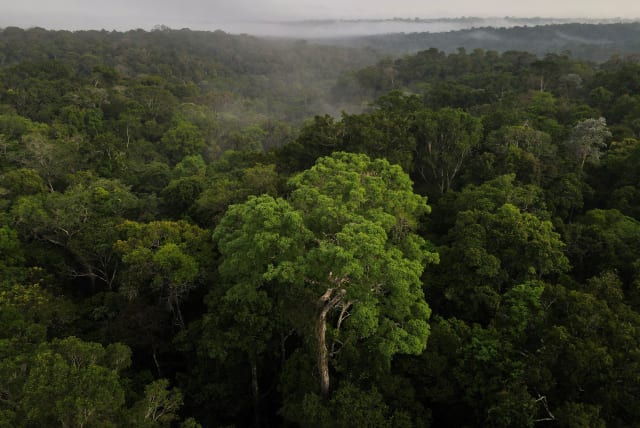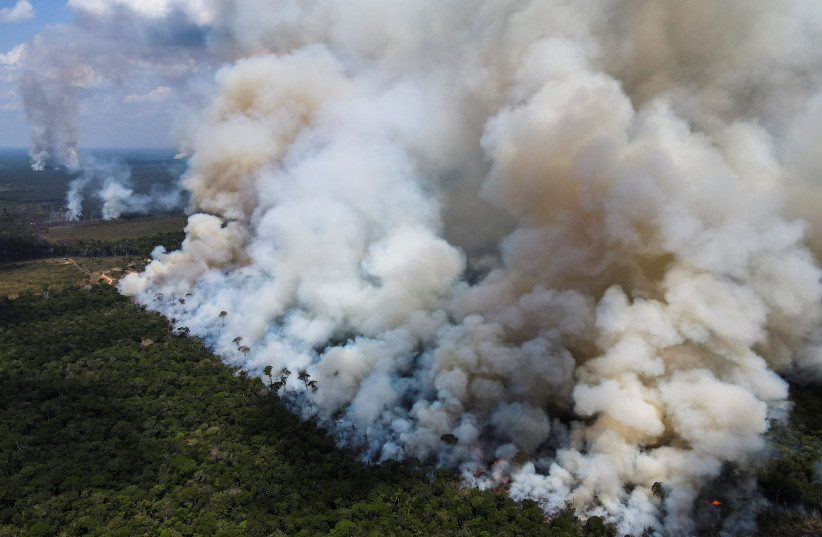Intensifying windthrow on the horizon as climate change fuels storms

Climate change exacerbates tropical storms. As a result of the more extreme winds associated with these events, more trees are uprooted.
The occurrence of trees being uprooted by winds, or windthrow, is becoming increasingly severe in the Amazon Rainforest as climate change exacerbates storms, researchers from Berkley, California have found.
The research was published in the open-access, peer-reviewed scientific journal, Nature Communications earlier this month.
The projections in the study were made under the "high-emission scenario." Emission scenarios are predictions of future greenhouse gas emissions. A high-emission scenario typically refers to future environmental circumstances if society does not take any substantial steps to cut carbon emissions.
The Intergovernmental Panel on Climate Change (IPCC) explains that scientists frequently consider multiple scenarios because there are many elements such as demographic, socioeconomic, and technological factors that play tremendous roles in how the future will unfold. Consequently, future emission levels are always uncertain. Hence, considering different emissions scenarios is necessary.
While discussion surrounding the loss of trees in the Amazon Rainforest frequently focuses on the direct cutting of trees, storms are an enormous contributor to tree death. A 2020 study published in the same journal suggests that as much as roughly 50% of tree mortality in Amazonia is the result of convective storms.
"Convective storms" is a broad term used to denote thunderstorms. They are associated with strong winds, rain, thunder, and lightning.
Climate change doing more damage than chopping down trees
In 2010, NASA found that a single 2005 storm killed around half a billion trees in the Amazon. That figure represents more Amazonian trees than many of the estimates that are given for how many are chopped down by people annually.
With increasingly severe climate change, the rate of tree mortality is likely to rise. Already, the latter study from Nature Communications noted that it is possible that, already, some "forests are experiencing climatic conditions beyond their adaptative limits."
With the high-emissions scenario that the study considered, the researchers created a model to project the future of tree mortality caused by windthrow.
The model predicts that there will be between roughly a 30% and 70% increase in the area suitable for severe storms as a result of continuing climate change. Additionally, there will be a 26% to 60% increase in windthrow density in the Amazon by the end of the 21st century.
To get their data, the researchers mapped large windthrow events from 1990-2019 using Landsat satellite imagery over the entirety of the Amazon. Furthermore, the study only included large windthrow events to ensure that all the windthrows examined were indeed the result of severe convective storms.
Tree mortality rates will continue to increase
The study notes that the increase in tree mortality will continue to threaten the Amazon's ability to serve as a carbon sink.
Already, an extraordinary proportion of the Amazon rainforest has been lost. A December 2019 article published in the peer-reviewed scientific journal, Science Advances reported that, as of then, 17% of the entire Amazon basin had been deforested.
The Amazon rainforest is crucial for the planet's well-being. If it is destroyed, not only will countless ecosystems, habitats and human lives be destroyed, but the planet will have lost one of its largest carbon sinks. Without the rainforest, climate change will be significantly more difficult to manage.
Jerusalem Post Store
`; document.getElementById("linkPremium").innerHTML = cont; var divWithLink = document.getElementById("premium-link"); if (divWithLink !== null && divWithLink !== 'undefined') { divWithLink.style.border = "solid 1px #cb0f3e"; divWithLink.style.textAlign = "center"; divWithLink.style.marginBottom = "15px"; divWithLink.style.marginTop = "15px"; divWithLink.style.width = "100%"; divWithLink.style.backgroundColor = "#122952"; divWithLink.style.color = "#ffffff"; divWithLink.style.lineHeight = "1.5"; } } (function (v, i) { });

